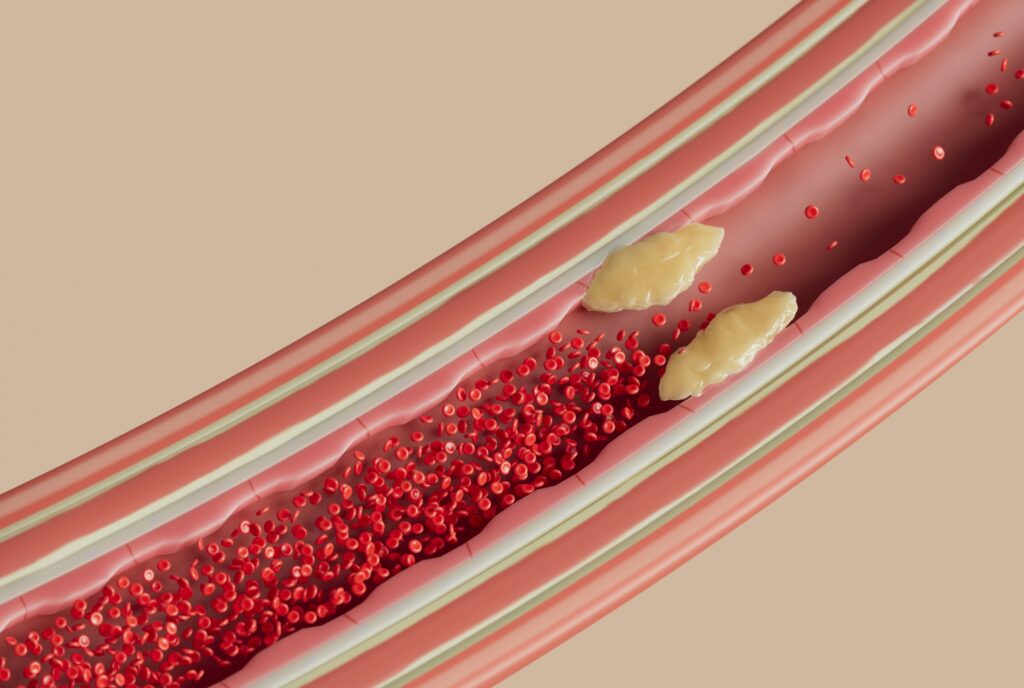September is Peripheral Artery Disease (PAD) Awareness Month, and it’s time to talk about a condition that too often flies under the radar.
What Is PAD?
Peripheral Artery Disease happens when the arteries in your legs become narrowed or blocked, usually because of plaque buildup. This reduces blood flow to your legs and feet. For many people, the first sign is pain, cramping, or tiredness in the legs while walking, a symptom that often gets brushed off as “just getting older.”
But PAD isn’t only about leg discomfort. It’s a serious circulation problem that can lead to wounds that don’t heal, infections, and in severe cases, even amputation. And because PAD is also linked to heart disease and stroke, it’s a red flag for overall cardiovascular health.
The Hidden Scale of PAD
PAD affects millions of people in the U.S., yet most don’t know they have it. Many chalk up the symptoms to aging or arthritis, delaying care until the disease has progressed. Women and people of color are especially at risk of going undiagnosed and untreated.
The real danger? PAD is not just about mobility, it’s about survival. Left untreated, it can shorten lives and limit independence.
Why PAD Gets Missed
So why do so many cases of PAD go undetected?
- Lack of awareness: Many people don’t know PAD exists until it’s advanced.
- Subtle symptoms: Leg pain or cramping often comes and goes, so people ignore it.
- Overlapping conditions: PAD can look like arthritis, nerve issues, or just fatigue.
The result is that too many patients miss out on early treatment that could protect their limbs and improve their health.
How Restore First Health Treats PAD
At Restore First Health, we believe PAD care should be proactive, not reactive. That’s why our team brings advanced vascular and wound care directly into the home.
Here’s how we help:
- Early Detection: We perform circulation checks and screenings to spot PAD before it worsens.
- Personalized Care Plans: We make sure patients are on the right medications, lifestyle plans, and exercise routines.
- Wound & Limb Preservation: For patients with ulcers or slow-healing wounds, our mobile wound care team provides treatments at home to avoid infection and prevent amputation.
- Whole-Patient Care: We coordinate with primary doctors and specialists, so patients have a full circle of support — no gaps, no missed steps.
Watch: Our Chief Medical Officer, Dr. Phillips, talks about how she saved a patient from going through with amputation.
What You Can Do
If you or a loved one has leg pain while walking, wounds that won’t heal, or a history of heart disease, diabetes, or smoking, don’t ignore the signs. Ask about PAD screening. The earlier it’s caught, the better the outcomes.
Conclusion
PAD isn’t just “getting older.” It’s a circulation problem that can affect independence, quality of life, and even survival. The good news? With awareness, early detection, and the right treatment, PAD can be managed — and lives can be changed.
At Restore First Health, we’re committed to catching PAD early and treating it where patients feel most comfortable — at home.
Contact us today:
We’ll coordinate the care, so you don’t have to.
- Refer a patient. https://restorefirsthealth.com/refer-a-patient/
- Schedule a consult. https://restorefirsthealth.com/request-a-consultation/
Follow us to keep up to the date on the latest health news:
National Heart, Lung, and Blood Institute (NHLBI). Peripheral Artery Disease (PAD). National Institutes of Health. https://www.nhlbi.nih.gov/health-topics/peripheral-artery-disease
Criqui MH, Aboyans V. Epidemiology of Peripheral Artery Disease. Circ Res. 2015;116(9):1509–1526. doi:10.1161/CIRCRESAHA.116.303849
Hirsch AT, Haskal ZJ, Hertzer NR, et al. ACC/AHA Guidelines for the Management of Patients With Peripheral Arterial Disease. J Am Coll Cardiol. 2006;47(6):e1–e192.
Intermountain Health Research Report, 2025. PAD prevalence and treatment trends in U.S. adults over 40.
Health.com. Survey: Most Americans Unaware of Peripheral Artery Disease Risks. 2025.
